Einleitung
This replacement guide will show how to a replace a faulty on/off switch on the Dremel MultiPro 395.
Was du brauchst
-
In diesem Schritt verwendetes Werkzeug:Flathead 3/32" or 2.5 mm Screwdriver$5.49
-
Remove the blue caps located on either side of the MultiPro, using a 3 mm flathead screwdriver.
-
-
-
Carefully remove the carbon brushes attached at the end of the springs by gently pulling on the springs using your hands.
-
Inspect brushes at this time. If they are approching 1/8" in length, they will need replacement soon.
-
-
-
Pull one side of the hanger up and then pull away from the Multipro until the other side can be pulled out.
-
-
-
Remove the 4 15mm screws located on the bottom of the Multipro with a T-15 screwdriver.
-
-
-
-
Hold down the collet lock, remove the chuck cap from the top of the Multipro by screwing counterclockwise.
-
-
-
Remove the black housing cap from the Multipro located directly below the chuck cap.
-
-
-
Pull the bottom side of the casing up to remove it.
Spring steel you must observe/keep/reinstall!
Critical note: BEFORE removing the motor shaft out of the second half of the outer casing in Step 8, carefully examine the inside part of the button you press to hold the shaft stationary (while you install/switch bits/tighten the chuck). There’s a C-shaped piece of spring steel on the inside of the unit, which has a little hole in it, that in turn sits on a little pin that is on the internal side of that shaft-holding button. It’s what causes that button to pop back out again after you’ve switched bits, freeing the shaft to spin again.
You must be able to carefully remove the motor shaft while observing how that spring steel sits in the inside of the button and not drop or lose it, because if you reassemble without it, the button will not spring back out and free the shaft after bit installation.
Kudos to the hero whose original comment I read that warned ME about this, a comment which I now can no longer find to credit the writer.
-
-
-
Pull the on/off switch off of the 120V field, paying careful attention to the prongs on the on/off switch.
-
For reassembly, make sure the prongs are touching the metal connecters on the bottom of the 120V field.
-
-
-
Remove the 2 wires on the back of the switch, connecting the cord to the switch, by inserting a small metal pick into the hole next to the wires and pulling the pick and the wire out together.
-
-
-
Carefully insert the wires into the new switch making sure the white wire is attached to left hand side and the black wire is attached to the right hand side when the switch is facing up. By pushing the wires in with your hand.
-
To reassemble your device, follow these instructions in reverse order.
To reassemble your device, follow these instructions in reverse order.
Rückgängig: Ich habe diese Anleitung nicht absolviert.
17 weitere Personen haben diese Anleitung absolviert.
10 Kommentare zur Anleitung
Useful.
You do not have to always replace the switch.
You may instead clean it. Just did that.
Alas I didn' t take any picture, (I'm not accustomed to tablets and thought would take too much time).
Switch's surface that faces mains cable is a lid held by four built-in pins that go in its corners; they end in hooks that latch in the body of switch. When you take out the lid you have ample access to the switch itself. It is actually a potentiometer. Mine was covered by dust and grease, after cleaning with Xerox film remover it functioned again, (if I had had it, I would have just used alcohol)
To remove lid I just used a small not too sharp knife to pry between the lid and the body of switch, going slowly and lifting each corner just a little rrpeating that in order severa times.
I too discovered that I could clean the potentiometer switch, and was then able to get it to function normally. Alas, I had already purchased the replacement switch, along with a spare set of brushes. I was quite surprised, by the amount of carbon remaining on the original brushes, especially considering the amount of use this particular Dremel MultiPro, Model #395 has logged! I found that simply by disassembling my unit, and blowing our the accumulated dust and gunk, yes that's a word in this man's vocabulary, it was ready to be reassembled, and has been working smoothly ever since! The fix-it directions provided here, were both simple and easy to follow, in addition to being filled with pictures. I am one of those who is very much, a visual learner. Kudos to the individual who produced this fix-it segment! A. Daniel Kunz - Nov. 23 2016
Weird. I replaced with a new switch and the “no inbetween speeds” sympton still remains. Measured the voltage in my shop and it is 125-127V so I should be fine. Dunno what else to do.
Nice write-up! Thank you… I have a Model 395, Type 4, and pretty sure I have a switch problem… Took the unit apart and cleaned with alcohol, but no change… The tool ramps up to speed (seemingly correctly) until I reach about 3-to-3-1/2 on the switch. It then levels-off at that same speed through the “4” setting, and then completely quits at 4-1/2-to-5 setting on the switch… It does that every time.. So the 3-1/2 speed setting is about as fast as it goes…
This familiar to anyone else? Again, pretty well convinced it’s a switch issue, but just thought I’d post to see if anyone else has experienced this, and the solution… Thanks!
Dremel MultiPro Model 395 Type5
Motor fails to run by itself. If I place the speed switch at setting 5 and then turn the chuck counter clockwise by hand, the motor runs at high speed. When I Iower the speed control to 4.3,2,1, the motor stops running. I thought it might be the brushes so I installed a new set of brushes. Dremel part # 90930-05. This has not solved the problem. The switch moves from 1 to 5 very smoothly without stopping at any settings between 1 and 5.
I normally use the Dremel on high speed. Any way to jump the switch so it only runs on high speed?
My 395 became a 1 speed machine yesterday-the highest speed only. The switch would work on high no matterwhat part of the range it was in., which is a good default choice when it fails.
I had already put a new switch in a shopping basket, but today figured that I’d try cleaning the old one as a previous commentor had suggested, before ordering the new one.
After careful brushing and flushing (with alcohol) the tool NOW functions at more than one speed, but the highest speed it will now reach is about half speed. I should have left well-enough alone-until the new switch arrives.
To the Author:
@jeeyunsun
Hi @marshwaha here, I made a recent edit to this guide for the on/off switch, I added a link to the part and the part number along with a description of said part. Hope you see this comment. Thanks, @marshwaha
Spring steel piece not to lose before removing motor shaft from housing!
Added this under step 7 but placing here too.
Critical: BEFORE removing the motor shaft from the second half of the outer casing in Step 8, carefully examine the inside part of the button you press to hold the shaft stationary (while you install/switch bits/tighten the chuck). There’s a C-shaped piece of spring steel on the inside of the unit, which has a little hole in it, that in turn sits on a little pin that is on the internal side of that shaft-holding button. It’s what causes that button to pop back out again after you’ve switched bits, freeing the shaft to spin again.
You must be able to carefully remove the motor shaft while observing how that spring steel sits in the inside of the button and not drop or lose it, otherwise the button will no longer pop back out and free the shaft after reassembly!
Kudos to the hero whose original comment I read that warned ME about this, a comment which I now can no longer find to credit.











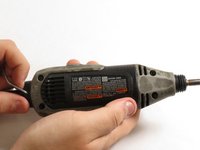




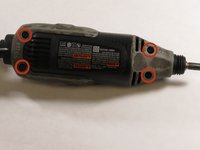
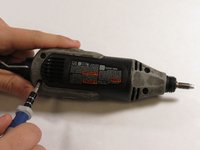
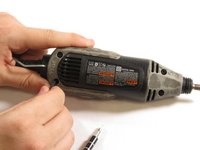



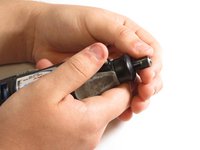
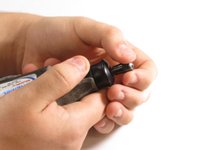
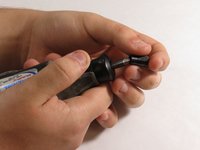



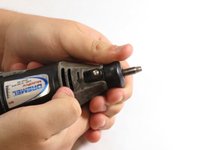
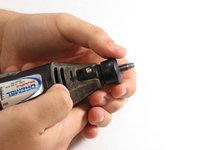
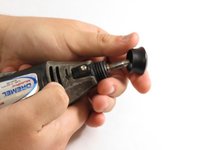

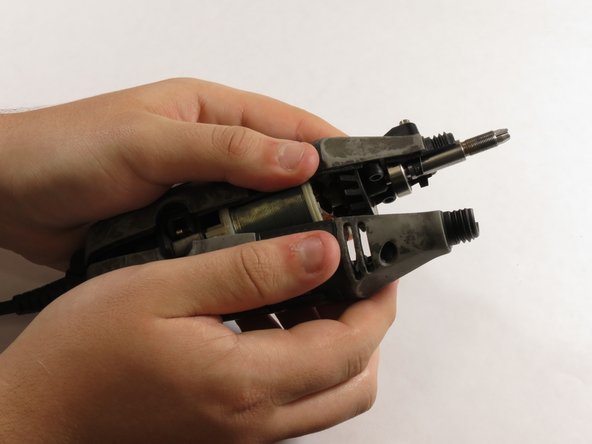
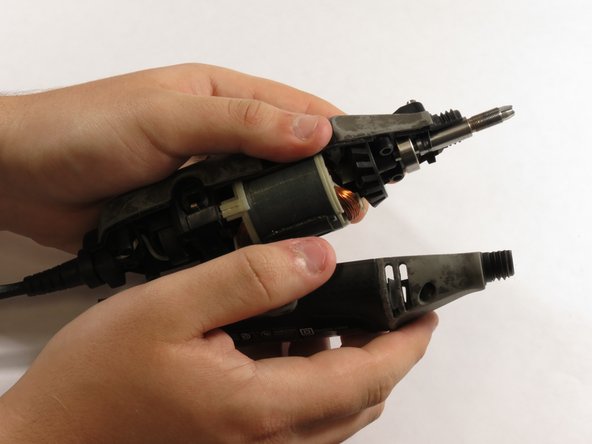
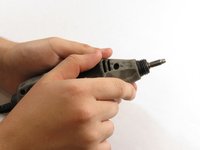
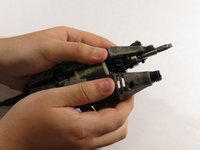




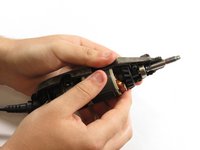
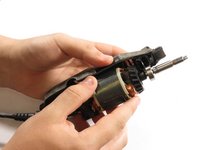
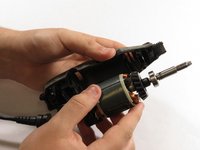

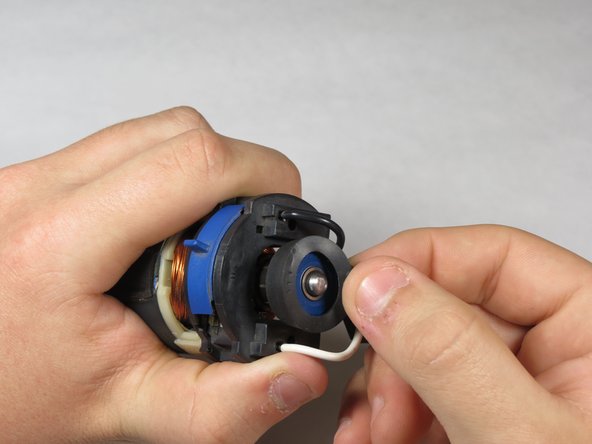
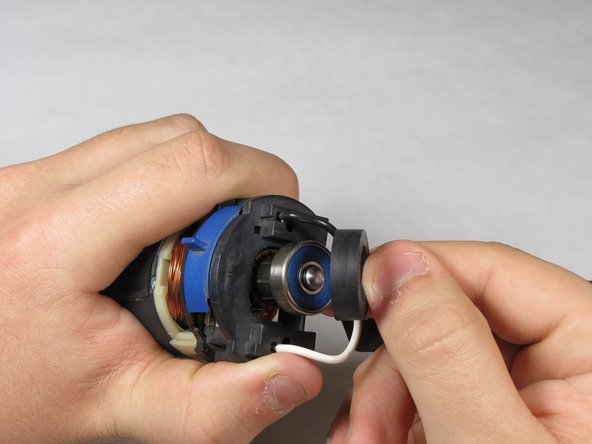

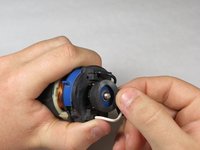
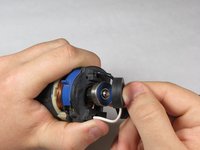



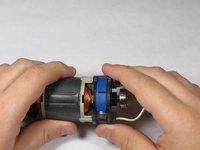
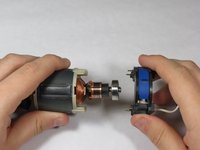
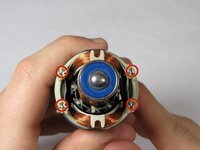



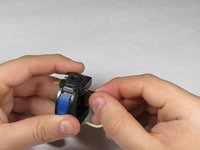
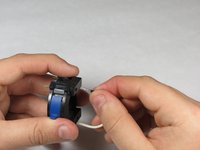
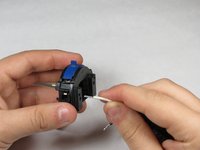



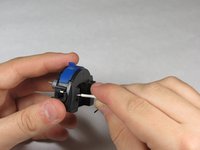
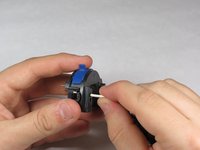
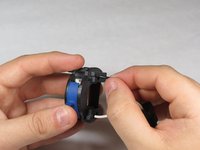
Hi m8,
my 395 dremel. has died on me
no power & the multi speed selector his no clicking on it.
I've changed carbon brushes
& the amp fuse.any ideas..
steve - Antwort